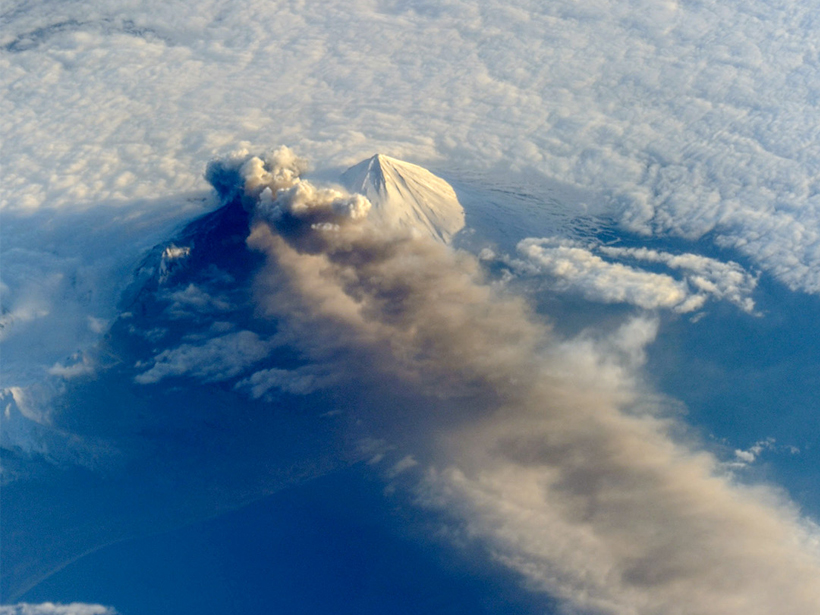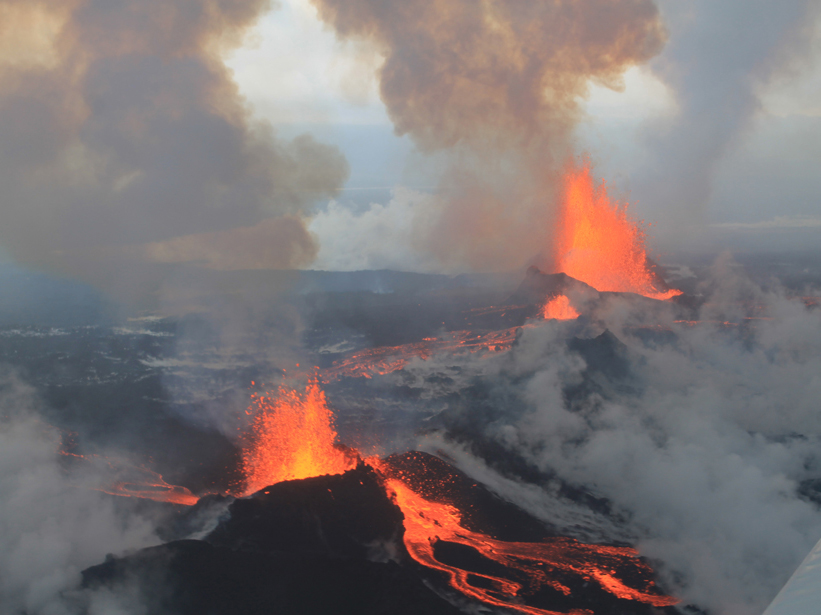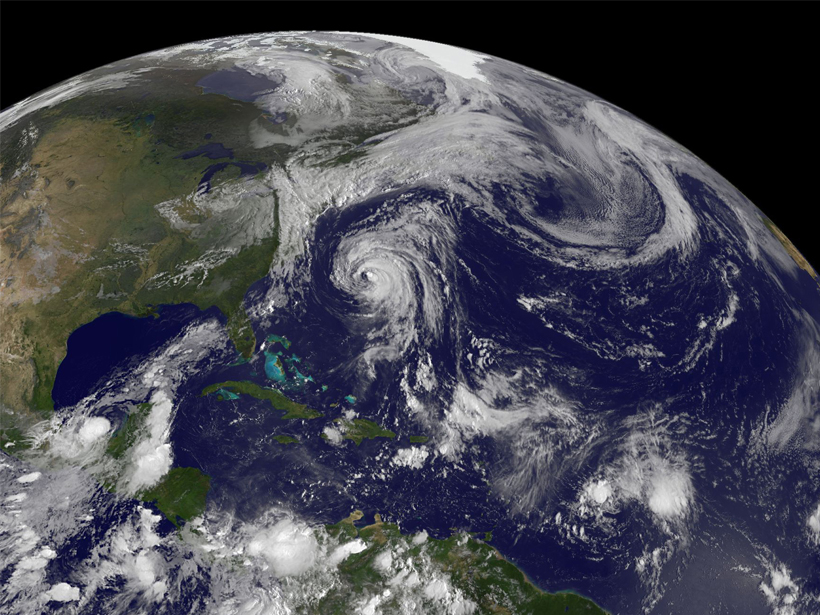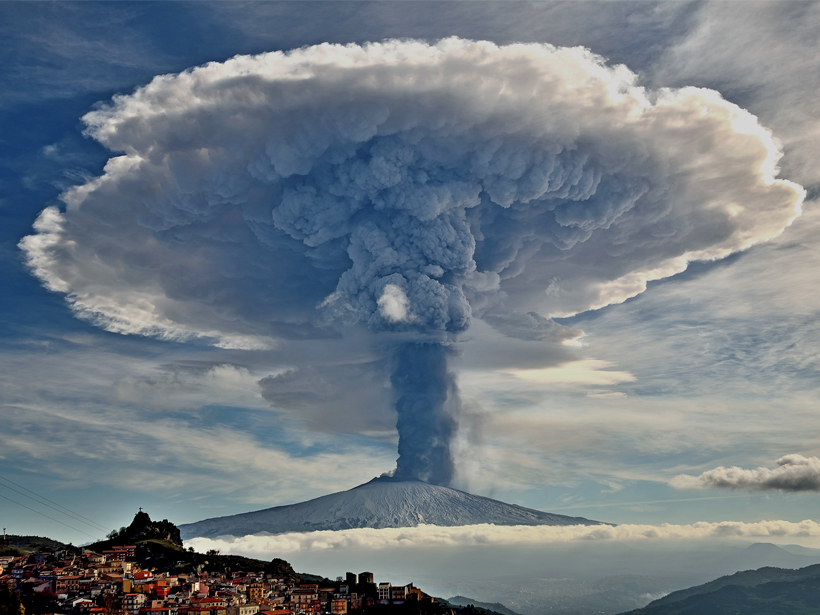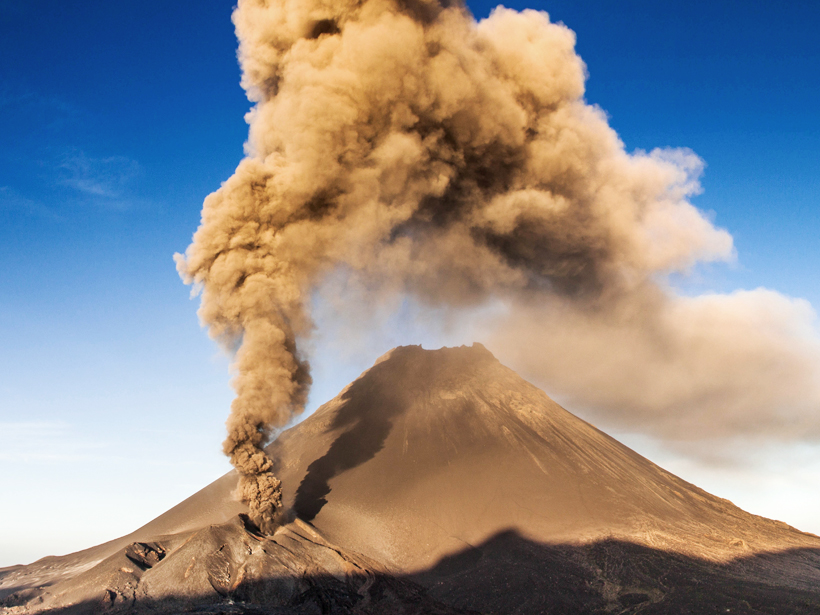Workshops on Volcanoes; Santiaguito, Guatemala, 4–12 January 2016
volcanoes
Volcanic Lightning Could Aid Hazard Response During Eruptions
Lightning and ash plume dynamics reflected eruption behavior and signaled the onset of fast-moving rock and gas flows during the 2015 eruption of Chile's Calbuco volcano.
Sound Waves Help Scientists Track Volcanic Eruptions
When sound waves hit the ground, they shake seismometers like earthquake waves. Scientists can now use these sound-induced seismic waves to investigate volcanic activity.
Asphalt Volcanoes Erupt in Slow Motion
Natural asphalt seeps on the ocean floor provide a stable home for diverse marine life that sequesters greenhouse gases.
Icelandic Eruption Caused Record-Breaking Sulfur Dioxide Release
Satellite and ground-based data reveal sulfur dioxide flux, trace element release, and preeruption magma movement.
Fewer Tropical Cyclones Form After Volcanic Eruptions
Volcanic eruptions aren't all bad—in some cases, they can lower the frequency of tropical cyclones in the North Atlantic by emitting sulfate aerosols.
Can We Predict How Volcanic Ash Disperses After an Eruption?
Researchers investigate what factors influence how particles from a plume spread following a volcanic eruption.
Massive Carbon Dioxide Stores Beneath Mammoth Mountain
Gas in rocky pores beneath the surface of California's Mammoth Mountain could fuel dangerous carbon dioxide emissions for the next 28 to 1100 years.
Radar Technique Shows Magma Flow in 2014 Cape Verde Eruption
The European Space Agency's Sentinel-1 satellite captures volcanic surface changes that reveal the flow below.
Scientists Discover a New Source of Atmospheric Carbon Dioxide
In an African region where continental crust is pulling apart and fracturing—the East African Rift zone—the area's many faults are slowly releasing a large amount of carbon dioxide.



